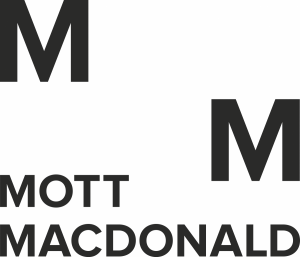By Alastair Buckle of Mott MacDonald
Are change models still effective for organisational transformation today? Rethinking how communication is understood and recognising the potency of talk for enacting change offers a solution beyond models. One that explores the communicative processes shaping action within complex organisations and the environments in which they operate.
Beyond Models
Change models like Kurt Lewin’s Unfreeze, Change, Freeze, John Kotter’s 8 steps or Jeff Hiatt’s ADKAR are proven and useful tools that consultants and academics alike use when dealing with the topic of organisational change. In many ways they have shaped how change has been understood. Models like these tend to see change as something that takes place through a series of planned steps with a start and an end. More recent discussions have shifted away from discrete models to capabilities and behaviours that view change as a more constant, iterative process that is ever-present in workplaces. Regardless of the model though almost all emphasise the need to create an awareness of why a change is necessary. Communicating a reason or vision to people within an organisation is viewed as an essential component and yet very few of these models really delve deeper into the communicative processes at play when organising or instigating change. As consultants we are almost constantly faced with change such is the nature of our work. Very often our role is to help facilitate, navigate, organise and/or lead change within client organisations and so understanding these communicative processes is not only useful but central to our work.
Understanding more deeply how communicative processes influence organisation and change necessitates a more radical view of what communication actually is, one that challenges the notion that communication is simply a vehicle for transmission. Communication is no longer understood as a neutral process between sender and receiver (where messages have predefined and unchanging meanings). Rather, communication is a dynamic and interactive process, an ongoing negotiation of meaning that takes place between actors. Still, why is it important that communication generates meaning? Because meaning frames action; what people do as a result of what has been understood. When employees are ‘made aware of’ or ‘given a vision’ for why a change is necessary then it sparks a series of interactions where people make sense (read: generate meaning) of what that vision or that change means in relation to their work – and ultimately what action to take.
Quick reflection: Choosing to do nothing once meaning has been generated is still a form of action. Conscious inaction can be a strong form of resistance to change efforts and can even derail them completely.
Organisation, Communication and Scaling Up
Organisations emerge as a result of interconnected and ongoing interactions and so the term itself –organisation – refers to both the verb and noun, the verb being the process ‘of organising’ and the noun being the entity or thing that emerges from that process i.e. ‘the organisation’. The interactions taking place though are not just between people. Documents, texts, machines, tools, signs, and systems are also all part of these communicative processes. These ‘non-human’ actors are not insignificant bystanders either. They too make a difference to communication and action.
Let’s take a simple example of a Best Practice Guide. The document is the outcome of series of conversations between people that agree the best way of doing something. The guide is developed in a text or document format, this is disseminated and read by people within an organisation which then shapes subsequent conversations. They then become processes and systems that are designed and implemented to enable action in the ‘Best Practice’ way. The processes and systems then again impact on conversations about how to apply or act in a specific context. The Best Practice Guide has some authority; people go to it to understand (read: generate meaning) about the most effective way to manage a scenario, tackle a problem, find a solution etc. and they use processes and systems that also make a difference to the situation in how they enable a particular way of doing things. People still have conversations with colleagues based on; the previous conversations, the Best Practice Guide, the processes and systems, further conversations and so on in agreeing a course of action. The document is both the outcome of many interactions and an agent for shaping subsequent ones, the same can be said of processes, systems, practices and so on. These ‘non-human’ actors do nothing on their own it is still people taking action, but equally without the ‘non-human actors’ people would start from zero each time. Documents, processes, systems, practices all add structure and stability to organisations where meaning is not completely renegotiated from the beginning.
What this simple example shows is how conversations ‘scale up’ into longer lasting more stable forms of organising. Talk transforms not just into documents but into practices, processes, norms, behaviours, systems that again affect subsequent interactions and action. In reality we know that work is made up of far more than Best Practice guides and there is an ever-growing list of tools, channels, mediums, etc. through which organisations codify, develop and establish common and effective ways of working (read: action). The point here though is to recognise organisations as networks of communication that are rooted in local interaction, rooted in talk. Not every conversation or interaction generates meaning that has an impact on the greater network though. Some conversations will remain just talk. Crucially the conversations that resonate amongst actors are the ones that ‘scale up’ to become documents, routines, processes etc. The greater something resonates with people the faster and further it moves across the network (between actors human and ‘non-human’), and the more influence it can be said to have in generating meaning and subsequently action.
Consultants can significantly influence the communicative processes by recognising the ability for conversations to enable action and by actively participating in and shaping them. Not only can we help to identify meanings that resonate with both members of the organisation and the strategic aims of a change, but we crucially can also amplify voices and conversations that would otherwise be lost by virtue of our position within the network. As consultants we often have an ability to bridge silos within organisations and connect conversations more easily than others. We operate frequently in-between teams, functions, divisions where we aren’t viewed as full members of a client organisation but neither as total outsiders and this can allow us to occupy spaces others cannot. Leveraging those opportunities demands us to listen before we talk and to identify and capture communications that do more than just align with outcomes but that resonate with people.
Finding Resonance: Project 13
Project 13 is an industry led response to why infrastructure delivery in the UK fails, set up by the Infrastructure Client Group (ICG) the project offers a new and much more collaborative approach to delivering infrastructure. Project 13 seeks to enable delivery models that move away from outputs and transactional relationships and towards shared value and outcomes. Based on research and consultations the project has developed an increasing set of tools and resources (currently 50+ documents, website*) and convenes several focused working groups that promote and develop these ways of working. Project 13 identifies five key principles that are critical to delivering infrastructure efficiently and reliably as well as explicitly redefining (using a relatively new set of terminology) the roles and functions of key stakeholders. The definitions and principles act as a base or framework for owners (the organisation that owns and operates the infrastructure, encourages investment in the programme and puts completed assets into operation**) to take action – in this case to deliver infrastructure.
Project 13 has provoked conversations across the sector, the terminology and principles are becoming an increasingly important part of the conversation around infrastructure delivery in the UK. The very fact the authors of it have used different language is igniting discussions about what the new terms mean to organisations themselves and how that shapes action in the future. Project 13 is resonating and generating meaning, not with everyone and not in the same way but it is having an impact, it is enacting change. Within this process the five principles are refined and iterated; providing information on how they apply in different contexts or organisations where constraints and maturity levels vary. The communicative processes are happening now as consultancies generate and develop an understanding of what it means for their own organisations and to their clients. It is here we begin to see the power of talk.
The end goal of Project 13 is clear, however unique constraints and maturity levels affecting client’s programmes means that Project 13’s application will look different as it ‘scales up’ in organisations. Organisations including consultancies need to develop a common understanding within their own organisations of what Project 13 is so there is consistency in action and so that said action progresses in-line with the principles.
However, consultancies must also recognise that individual clients will enact change differently and so there needs to be a tolerance for some level of dissonance. Identifying the different paths clients can take in reaching the same end goal of Project 13 accounts for this dissonance, crucially it also allows consultants and clients to generate shared meanings that resonate. Resonance is important because it increases the potential for individual and collective action – that drives change and delivers outcomes. As such Project 13 as a movement is not static: it evolves, what this illustrates is how communication is a dynamic process; an ongoing negotiation of meaning.
Talk Isn’t Cheap
Digital technologies have transformed the ways in which people communicate with one another and they allow people to have more conversations than ever before. The benefits of greater connectivity in organisations are apparent but a by-product of more conversations is also more noise. Enacting change within a client’s organisation will depend on so many conversations and we as consultants can play a key role in influencing and shaping them. Identifying talk that resonates is key to cutting through the noise. Consultants need to develop understandings of both the strategic aims of the clients they work for and the people within them in order to find talk that speaks to both – talk that resonates.
The take away here is to recognise communication is not simply a tool used by Public Relations or Marketing departments. Communication is a constitutive and consequential force that creates defining realities for organisations and change. Communication starts with talk hence why talk really does matter.
……………………………………………………………………………………………………………………………………………………………
*What is Project 13 I Project 13
**From Transactions to Enterprises I Project 13
……………………………………………………………………………………………………………………………………………………………
By Alastair Buckle
Alastair is a consultant at Mott MacDonald and presented an academic paper at the European Group for Organizational Studies (EGOS) conference in July of this year. Mott MacDonald supported Alastair in attending EGOS as part of an ongoing commitment to developing the technical and professional excellence of our people.


